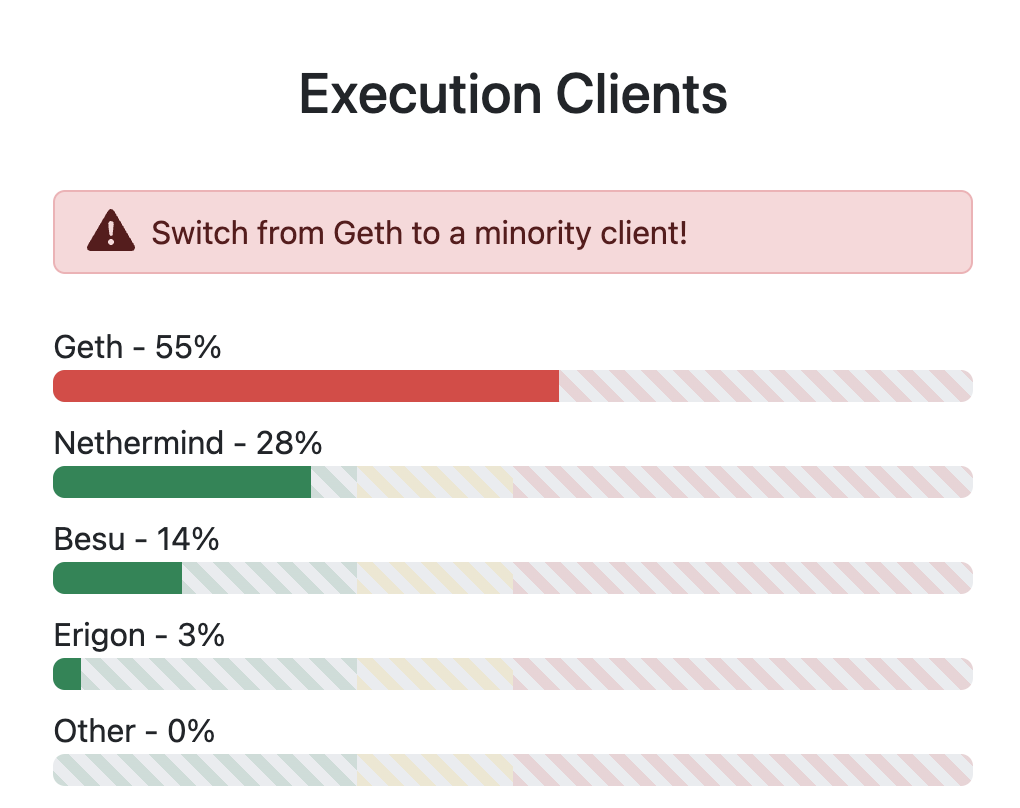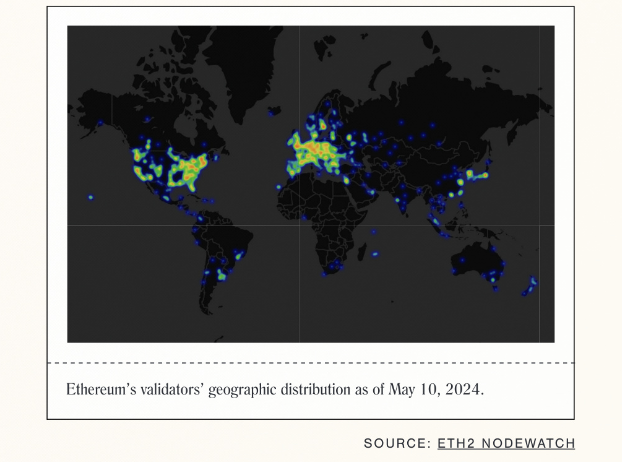Liquid Collective, a decentralized liquid staking protocol on Ethereum , and Obol Network, a decentralized validator technology (DVT) protocol, jointly launched a risk report on Ethereum staking on the 6th, including on clients, operators and cloud Diversity concerns, in addition to potential risks posed by the 2025 Pectra upgrade.
According to Cointelegraph, Matt Leisinger, chief product officer of Alluvial, Liquid Collective’s software development company, said in an interview:
Our latest report with Obol highlights the increasing importance of addressing the risks and protocol-level penalties associated with Ethereum staking.
Customer and Operator Risks
The report alleged that problems with clients and operators could put Ethereum at risk, and named the executive client with 84% of the market share:
- Major bugs in mainstream clients could result in "severe penalties" and "network instability"
- Staking is an important part of the Ethereum consensus mechanism. Staking through a single large node operator may expose the pledged assets to risks of downtime and penalties.
- Popular clients such as Geth and Nethermind are used by 84% of the Internet, and a bug in one of them can cause major outages.
Therefore, the report reminds that operator diversity is critical to maintaining network health and avoiding single points of failure.

In addition, Leisinger also told the media:
Every stakeholder and service provider must rigorously evaluate relevance, diversity, and risk mitigation to prevent potential risks, even from trusted node operators. "
Cloud and geographic diversity issues
The report also analyzes the geographical distribution of validators and cloud providers and believes that too concentrated a distribution can bring associated disruption risks. At the same time, the report cited Hetzner and AWS as examples of recent service outages.
In addition, the report proposes that decentralized validator technology (DVT) can effectively improve cloud and geographical diversity. Can be used both in multi-carrier staking configurations and as a single-carrier failover technology. Geographic diversity also helps avoid disruptions caused by natural disasters or wars.

Pectra upgrade
On the other hand, the Ethereum “Pectra upgrade” expected to be launched at the end of the first quarter of 2025 will introduce EIP-7251 (maxeb), which will increase the validator’s maximum effective balance holding between 32 and 2,048 ETH to incentivize staking operators Merge validators into a super validator).
However, the report warns that increasing the maximum effective stake for a single validator to 2,048 ETH will result in a reduction in the total number of validators on Ethereum, thereby reducing the number of P2P messages and BLS signatures that need to be aggregated per epoch. This means that reducing validators could increase the risk of a single point of failure and impact the decentralized nature of the network:
With each validator now able to have a higher effective balance, professional node operators are expected to consolidate the number of validator nodes they operate to reduce costs and streamline operations, resulting in a reduction in the total number of validators on Ethereum. This will reduce the number of redundant validators (operated by the same entity) and thus the number of P2P messages and BLS signatures that need to be aggregated per epoch.






